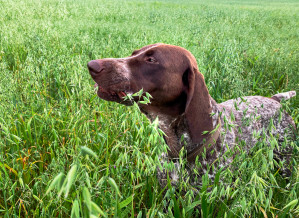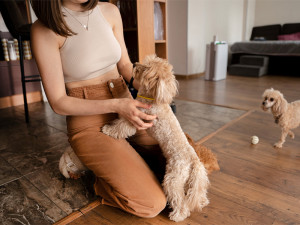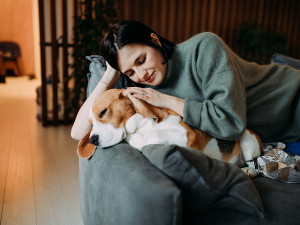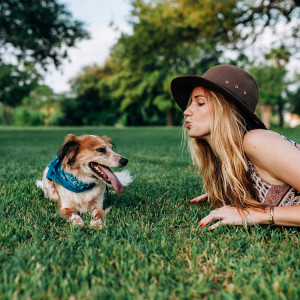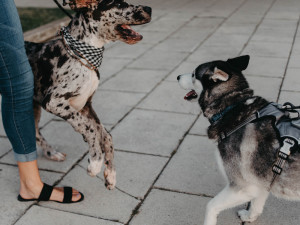Nine Useful Tricks to Teach Your Dog
Go beyond the basics
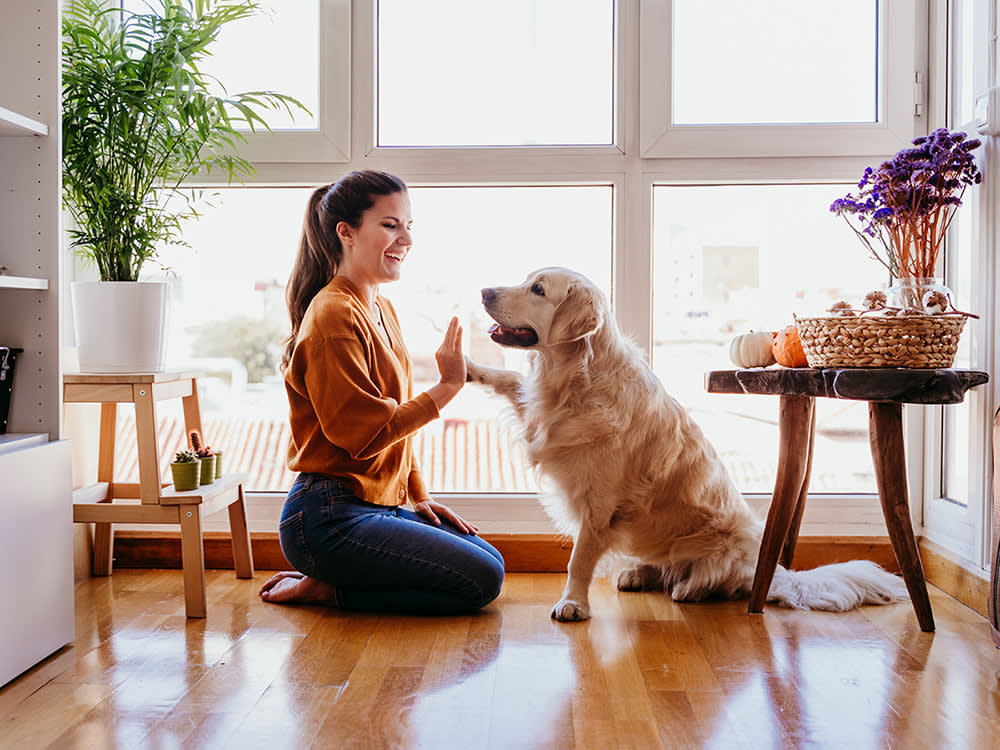
Share Article
Many people consider dog tricks completely frivolous, or at least think that time spent training dogs to do them could be better invested in teaching useful skills. But if people realised the practical value of tricks, they might be willing to engage their dogs in learning a few.
There’s more to dog training than the basics such as sit, lie down, heel, stay and how to come on cue. Dogs who learn to ‘wait’ can sit patiently at the house or car door until told to proceed, and it’s helpful when your dog learns to ‘leave it’ when they spot food on the floor rather than hoover it up. If you’re ready to beef up your pup’s CV and teach them a new skill, there are many tricks that offer more than just cute performance opportunities. Here’s a list of useful dog tricks that go beyond the basics.
Nine tricks to teach your dog
Crawl
Teaching your dog to crawl can be helpful as a way to clean themselves off. If you live with a dog who enjoys a good walk in the mud, ask your pup to crawl in some snow or grass to clean up a bit before heading inside.
Handshake
When your dog has mastered the handshake, you can ask your dog to present a paw on cue when cutting their nails or at the vet to make a blood draw easier. It’s also useful when checking for pad injuries or just towelling off wet paws after a walk.
Wait
The ‘wait’ cue instructs your dog to pause and not to move forwards until given permission to do so. It can literally be a lifesaver at doors to both houses and cars because it can prevent bolting out into traffic. Additionally, ‘wait’ can be a sanity-saver when heading out for a walk because it stops the chaos that naturally results from overly-excited dogs who are so eager to go out for a walk that they run around like wild.
Belly up
Teaching the ‘belly up’ cue tells your dog to lie on their back with their legs in the air. If you have a dog that loves belly rubs, this is an easy one, but it can also help a vet perform an examination more easily.
Beg
This cute trick provides another way for a dog to expose their belly, and comes in handy when you need to pull off burrs or seeds. If your dog’s balance is good, ‘beg’ can also be a way to position a dog for a quick brush of the belly fur.
What?
This is a cue to your dog to tilt their head, which makes photos of dogs especially endearing no matter what position they’re in. The less time you spend trying to get dogs into specific poses, the more likely they’ll have a friendly expression on their face.
Bow
Having your dog perform a play bow on cue is more than just a cute trick; it can also help a dog who is a bit awkward or nervous around other dogs. The play bow is a social signal that means, ‘What follows is playful in nature’, and performing one near other dogs can help social interactions start off on the right paw, easing tensions caused by confusing or unexpected behaviour.
Up
Up is a handy cue that tells your pup to jump or step on to something; it’s a great way to get big dogs to stand on the vet’s scale. It’s even more helpful when combined with a solid stay, but that’s not always essential.
Dry off
The ‘dry off’ cue tells your dog to shake their whole body. This cue is helpful to have your dog shake off excess water before coming inside after a walk in the rain or a bath.
Being able to ask your dog to perform a behaviour on cue makes many situations less anxiety-provoking. If your dog needs to perform a certain behaviour, either for medical reasons or to further that fruitless, endless pursuit of cleanliness, it’s better to be able to communicate what we want than to physically manipulate them. Rather than grab them, lift them or push them around – however gently – it’s advantageous just to be able to tell your pup what you want, and have them do it on their own through training. Tricks involve dogs putting their bodies (or at least parts of them) in all sorts of positions, and that variety of movement and behaviour is what gives dog tricks their practical value.

Karen B. London, PhD, CAAB, CPDT-KA
Karen B. London, Ph.D., is a Certified Applied Animal Behaviorist and Certified Professional Dog Trainer who specializes in working with dogs with serious behavioral issues, including aggression, and has also trained other animals including cats, birds, snakes, and insects.
Related articles
![A woman sitting on a floor playing with her dogs.]()
10 Signs Your Dog Has Imprinted on You
This has nothing to do with a werewolf named Jacob in a series called Twilight, but here’s what it is all about
![Dog with sleep startle reflex. Woman lays on her couch and gently wakes up her dog]()
Why Does My Dog Freak Out When I Wake Them Up?
‘Let sleeping dogs lie’ is more than just a proverb
![A woman playing with her dog making a kiss face at it.]()
Here’s How You Can Avoid the Worst: a Dog Bite to the Face
Step one: never put your face close to theirs
![Great Dane puppy and Husky meeting on leash out side.]()
Understanding Reactivity and Aggression in Dogs: Two Very Different Things
Apparently even experts have a hard time defining these terms
![Shy black dog walking with owner at the park.]()
How to Help an Anxious Dog Conquer Their Fears
Six animal behaviourists share pro tips for boosting the confidence of a fearful dog

